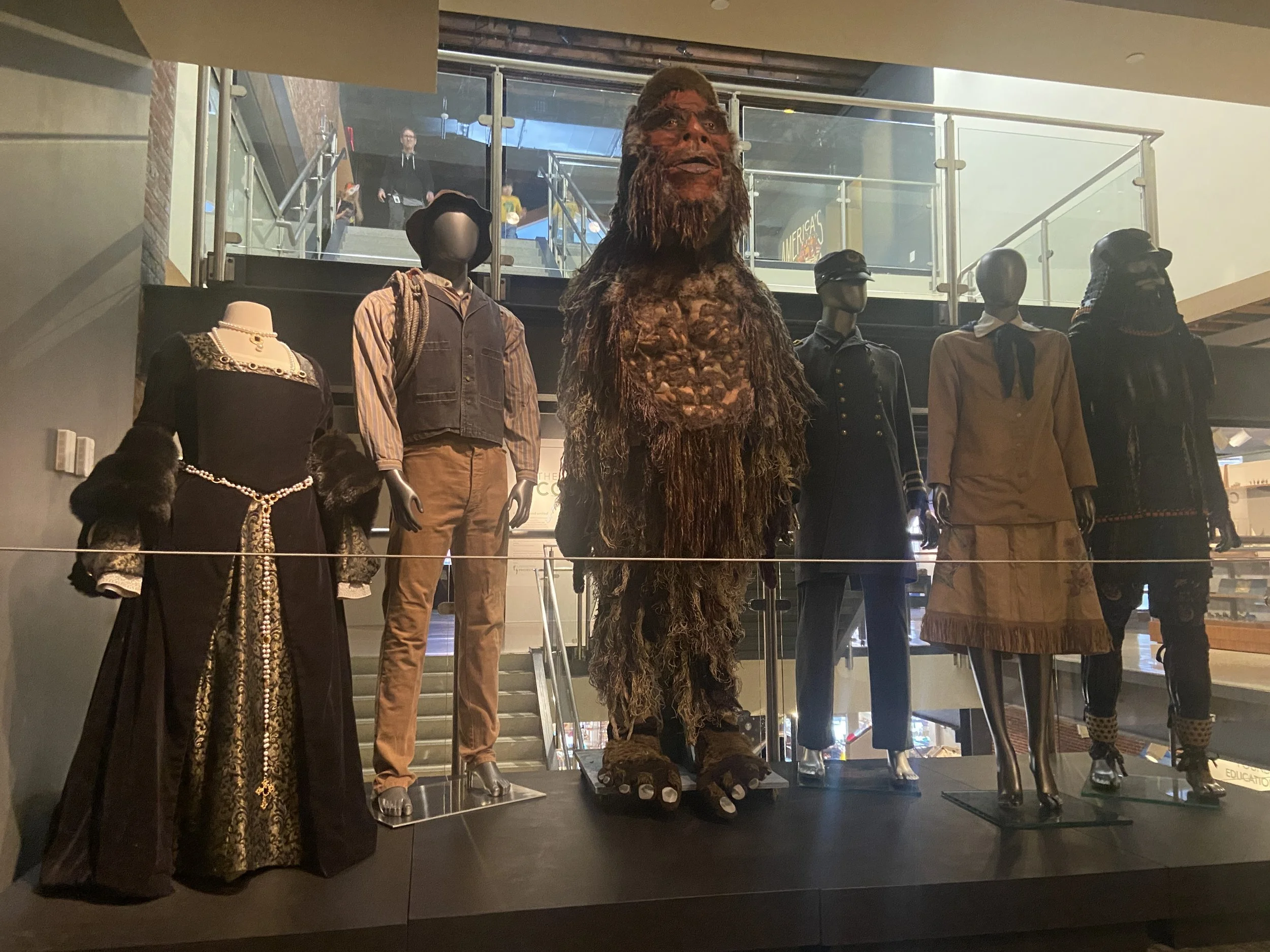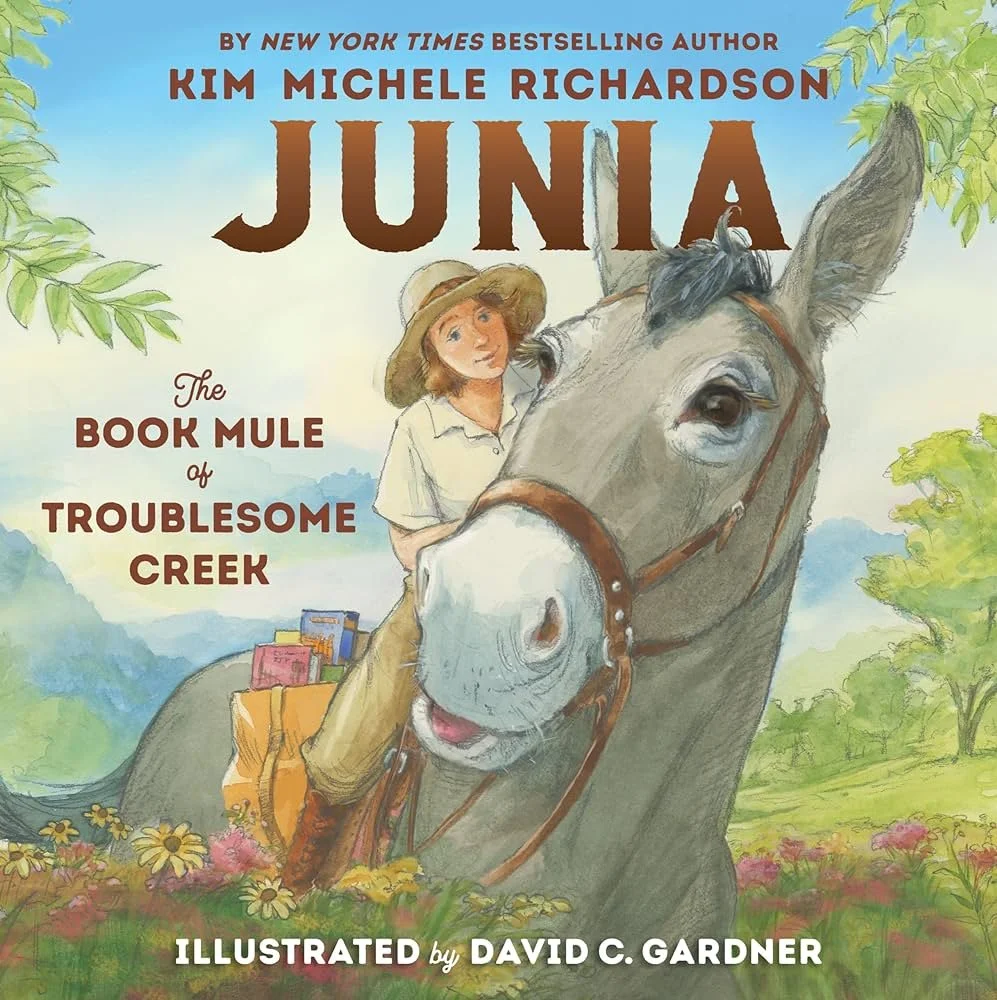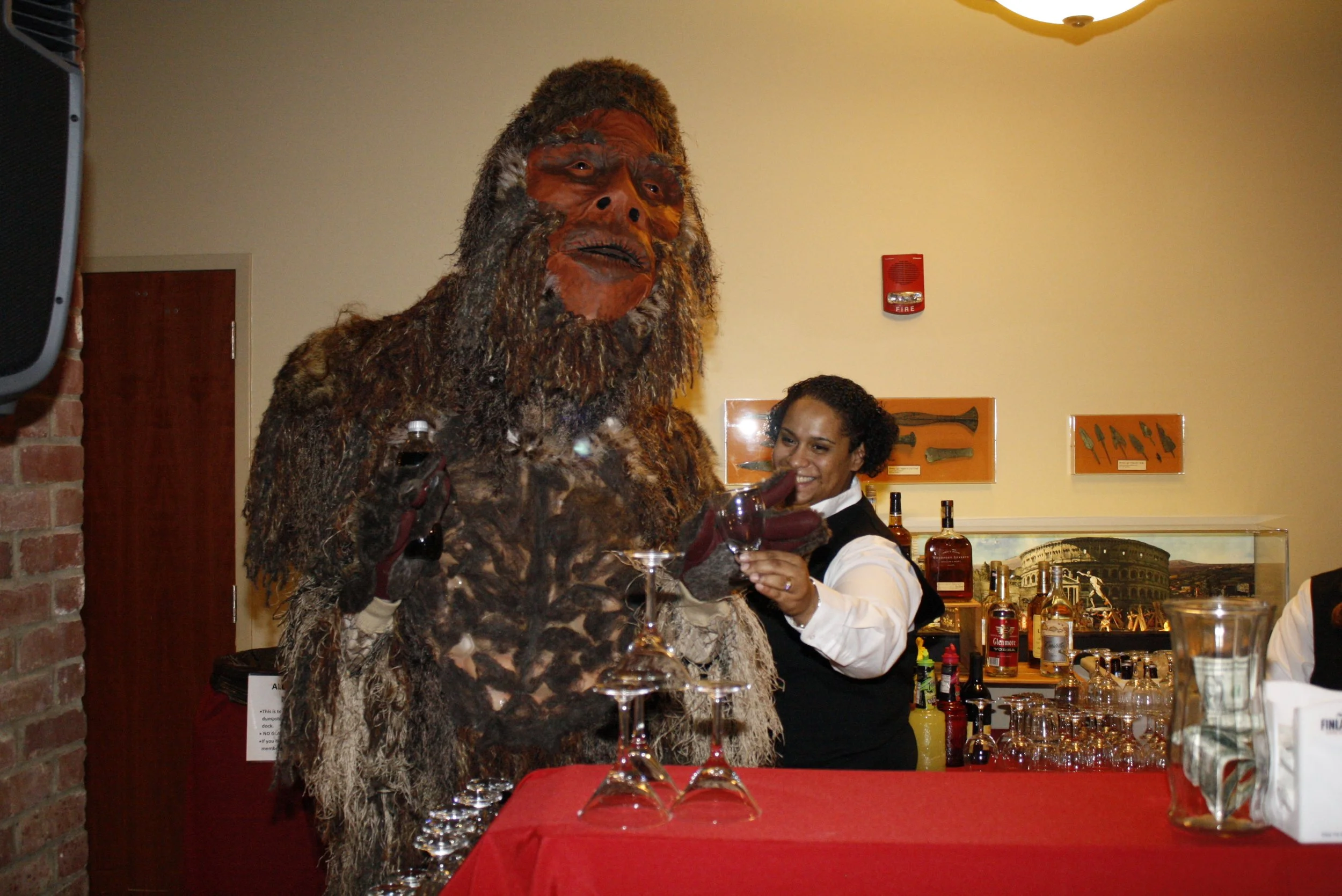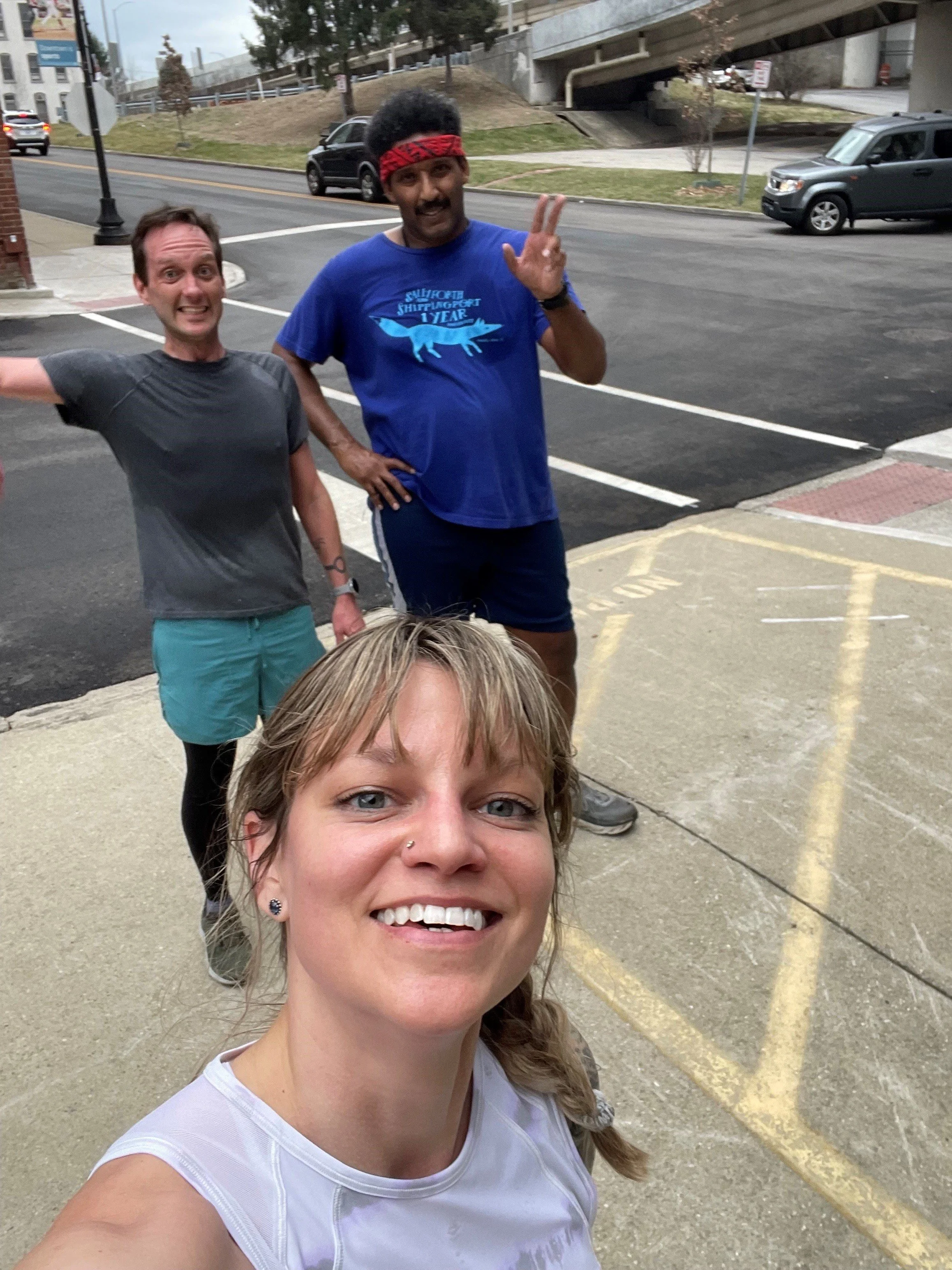Silent Auction’s Pappy Set, Pre-Gala Gallery Updates, Eastern Kentucky’s Packhorse Librarians, and More
Good Monday morning, y’all!
The stage is now set for Friday’s Night at the Museum: Celebrating 20 Years of the Frazier. In fact, the silent auction is live—and you can bid right now, whether you’re attending the Frazier’s soiree of the year or not.
Our series of Pappy Van Winkle bottles is one of several auction items highlighting what makes Kentucky so special. Click here to see the full auction lineup.
For our 20th anniversary, we’re excited to celebrate the legacy of our founder, Owsley Brown Frazier, who believed that by reconnecting with our past, we can renew a sense of who we are, what we stand for, and where we are headed. Heck, we might even introduce a new award in his name.
With five bands and all the entertainment, food, and drink included with each ticket, we’re betting, as Kentuckians do, that this bluegrass blowout will be the party of the year.
Friday night will also represent the debut of our new Founder’s Gallery, showing off some of Owsley’s favorite things. Amanda Briede offers a sneak peek below. Also, in this issue of Frazier Weekly, Rachel Patt highlights some horsepower from our 120: Cool KY Counties exhibit, Zach Bramel heads to Henderson County to see today’s eclipse with his family, and our media intern Olivia E. Duke makes 3D scans of the KMAC Couture dresses on our mezzanine.
Finally, the Frazier has entered two teams in the Derby City Marathon Relay later this month and we’re training together to prepare. Yes, I’m plodding along. Our partnership manager Leslie Anderson offers an inspirational perspective on her love/hate relationship with running.
I hope you enjoy!
Andy Treinen
President & CEO
Frazier History Museum
This Week in the Museum
Curator’s Corner: Frazier Updates Founder’s Gallery for 20th Anniversary
Costumes from past historic interpretations on display in the updated Founder’s Gallery, April 4, 2024. Credit: Frazier History Museum.
To celebrate the Frazier’s 20th anniversary, the Owsley Brown Frazier Founder’s Gallery on our second floor is getting an update. This gallery first opened in 2018 and I have strong memories of this installation. I was a collections technician back then, and I made all the mounts for the objects to go on display. I was more than a little nervous to mount and install some of the most precious and valuable items from Mr. Frazier’s collection. I had a few interns helping me with the installation, one of whom now has her own successful career in museums—which always reminds me just how long ago that original Founder’s Gallery installation occurred.
It is a bit of a full circle moment for me to be able to update the Founder’s Gallery since the original installation was so early in my career here at the Frazier. Though I never had the opportunity to meet Mr. Frazier, conversations with his granddaughter Amelia have made me certain that he would be so proud of all that the Frazier has accomplished. I am very proud of the way that the updates to the Founder’s Gallery will honor Mr. Frazier’s legacy and the origins of the museum. We will show off some of his original collection, including beautiful decorative firearms and firearms owned by important historic figures. The largest case in the gallery will show a timeline of the last twenty years of the Frazier History Museum, highlighting some of the most popular exhibitions and important events.
Perhaps my favorite case, though, will highlight all the ways that we are continuing Mr. Frazier’s legacy through our collection. Even though the focus of the Frazier has shifted since it first opened twenty years ago, we are still finding ways to honor Mr. Frazier through the items we collect and display. We will feature items from Kentuckians who served in the armed forces to honor the original focus on military history. We will show off some dusty Bourbon bottles to honor Mr. Frazier’s and his family’s contribution to the Bourbon industry, specifically in the Brown-Forman Corporation. And finally, we will display items related to the history of Louisville, the city Mr. Frazier lived in his entire life and contributed so much to with his philanthropic work.
The upcoming 20th anniversary gala and celebratory updates to the Founder’s Gallery have been such a great time of reflection for me to think about all the incredible things that the Frazier has accomplished in my time here, and I haven’t even been here for half of those twenty years. I’m excited to share some of the highlights of the Frazier’s past and a glimpse into its future in the new Founder’s Gallery.
I hope you will stop by and see it for yourself during the gala when it is officially unveiled!
Amanda Briede
Sr. Curator of Exhibitions
Eclipse-Watcher Zach Bramel on the Power of Looking Up
Today’s solar eclipse got me thinking: How many times do we look up in a day? I don’t mean eyerolls, or up at the search bar. I mean chin-lifting, back-arching, tops of trees looking up.
It depends on how old you are, in part. Crawling babies are always arching upwards to see more. And I spent last week hosting the Frazier’s spring break camp, where the kids were always looking up—to howl, to do backbends, to look at adults, to wave at a plane.
It all makes me feel like I don’t look up enough. Why should I?
Frazier staff member Simon Meiners looks up at a solar eclipse during totality at 1:23 p.m. while swimming in Lake Barkley by the fishing pier at Mineral Mound State Park in Lyon County, Kentucky, August 21, 2017. Credit: Margaret Sites.
I would argue that stretching to look up has basic physical and emotional benefits. The builders of churches and monuments think so. My yoga teachers and doctors agree, too, calling these types of stretches “heart-openers.” And if you throw your shoulders back, rotate your palms outward, lift your chin, and extend your spine, your body won’t argue. We look up because it feels good. It’s a counter stretch to all the crunched, downward-looking work most of us do—typing, computing, driving, doing the dishes, scrolling. (It’s all work done for someone else.)
Also, I think we look up to see extraordinary things. Who doesn’t want more than ordinary in their lives? Shooting stars. Hot air balloons. UFOs. Sunsets and storms. “Wild geese, harsh and exciting,” as Mary Oliver’s poem goes.
My family is privileged to have friends in Henderson, Kentucky; the ability to take off work, and a car to drive into the path of totality. But Louisvillians will get over 99% coverage (peaking at 3:07 p.m. today, according to NASA’s nifty Eclipse Explorer), and even that should be remarkable.
I can only speak for myself and say that I invested the time and energy to experience totality because I am looking for the extraordinary. For me, the extraordinary is what provides a refresher on the sublime, an invitation to examine what I hold as valuable, and a reminder of “my place in the family of things,” to quote Mary Oliver again.
Today, we have a pretty great invitation to stretch and look up. I hope we can make some time to talk about it tomorrow at work.
Zach Bramel
Manager of Youth & Family Programs
Highlights of 120: Johnson County: First Packhorse Library
Each week in Frazier Weekly, we highlight one of the diverse stories represented in our 120: Cool KY Counties exhibit. This week, we bring you a celebration of sisterhood. It was a sisterhood of women who saddled up in Appalachia to deliver books to rural areas. Because of the Great Depression and tight resources, it’s estimated a third of Americans no long had reasonable access to public library materials. The packhorse librarians changed all that. As we celebrate National Library Week, which is April 7–13, we thought we’d share the Johnson County entry on packhorse librarians. Learn more by visiting our 120 exhibit!—Rachel Platt, VP of Mission
A packhorse librarian delivers books to a school in Hindman, Knott County, Kentucky, January 11, 1938. Works Project Administration packhorse libraries made regular calls at mountain schools where children were furnished with books for themselves and books to read to illiterate parents and elders. The WPA built the stone school pictured to replace an antiquated log school. Credit: National Archives.
The first packhorse library in the US began in 1913 in Paintsville, Johnson County, Kentucky. It was administered by May Stafford and funded by coal baron John C. C. Mayo. The library ended in 1914 when Mayo died. In 1937, a national Pack Horse Library Project was started by the Works Progress Administration to deliver books to remote areas of Appalachia. Eventually, the packhorse libraries employed 200 people and served 100,000 residents. Almost everyone involved in the Pack Horse Library Project was a woman.
May Stafford again supervised the program locally in Johnson County. From 1937 to 1943, twenty-five ladies worked as librarians. They mended, classified, and distributed books throughout the county, using their personal horses for transportation. The librarians were paid only $20 per month. In 1939, a Library Board was formed. Land was donated and local citizens made the community’s first physical library a reality. Library service is alive and well today at the Johnson County Public Library.
Front cover of Junia, the Book Mule of Troublesome Creek by Kim Michele Richardson, 2024. Credit: Sleeping Bear Press.
Kentucky author Kim Michele Richardson has written her first children’s book: Junia, the Book Mule of Troublesome Creek. You got it: Junia is a mule with the important job of carrying her Book Woman to deliver books in Appalachia. Richardson, who is a New York Times bestselling author, has written on this topic before with her novel The Book Woman of Troublesome Creek. Kim wanted to tell you more about Junia, her love for these women, her efforts to pay tribute to them, and how her work has gotten the attention of Dolly Parton. I bet that got YOUR attention.—Rachel Platt, VP of Mission
For years after I wrote The Book Woman of Troublesome Creek, educators, teachers, and readers asked me to write a children’s book about my brave Kentucky sisters. I thought who better to share this unique Kentucky history and many adventures than the spunky and much-beloved, book-toting mule, Junia, in my other two Book Woman series installments.
I’ve always loved collecting children’s picture books as an adult. The first decade of my life was spent in a rural Kentucky orphanage, so growing up with 300+ other children, these beautiful treasures were scarce.
In Junia, the Book Mule of Troublesome Creek, I wanted children to experience this remarkable Appalachia tale of strength and courage and combine a heartfelt message about the power of literacy and inspire children to persevere no matter how big the obstacle and to always dream big.
It’s always been my belief that art, music, and storytelling cannot exist without the other. Every work should weave a tapestry of all three—and the greatest storytelling tangles a hymnal of beats across an artist’s palette.
With the children’s picture book, you get to experience the world and power of books through the eyes of a packhorse librarian’s most vital partner: a loyal mule who delights us while showing what a day in the life of a packhorse librarian was truly like, delivering books into the wilds of 1930s Kentucky.
I have a great love for Kentucky. This is my home and these are my people. As a native-born Kentuckian, all my books are set in my home state. It’s always humbling when I get to share my stories—and a privilege to honor the history and people—to bring my corner of the world into adults’ and children’s lives and make sure my beloved people are honestly represented.
The Kentucky people are intelligent, proud, passionate, oftentimes misunderstood, and sometimes persecuted—but in their complicated lives, history, and stories, you’ll find a constant. You’ll find dignity.
The Pack Horse Library Project represented one of the most innovative and forward-thinking initiatives of Roosevelt’s Works Progress Administration. Under the WPA, it began as a sole effort to put the poverty-stricken Kentucky women to work in 1935.
Our Kentucky women had originally implemented the library project in 1913 with monies donated from local coal baron John C. Mayo. Unfortunately, a year later, it expired after their benefactor passed. However, it would become wildly successful after the Kentucky women revived it through the WPA. It was mostly made up of women, who were called “Book Women,” who delivered reading materials by riding a horse or mule on treacherous routes. Little did anyone realize the program would boost education and economic opportunity, raise literacy rates, become a precursor to Johnson’s 1964 War on Poverty, and inspire other programs like Dolly Parton’s Imagination Library.
In the 1930s, many Americans suffered from poverty during the Great Depression—but none greater than those in eastern Kentucky. Coal miners were going hungry, being exploited and overworked, so they rebelled with violent strikes against coal companies. None of this stopped these fearless librarians.
One of the most striking things that stood out to me during my now ten years researching the Pack Horse Library Project was that Roosevelt promised he would provide employment and pay the poor Kentucky women $28 a month to ride those dangerous paths and deliver books, but would not provide any mounts, books, or places to house books.
So, our clever librarians rented their mounts, became authors, and began creating scrapbooks for their patrons until they could solicit cast off books from big cities, PTA penny funds, and women’s groups. Despite huge obstacles, the beloved library program became a successful educational outreach and an important bridge to education.
The Book Woman of Troublesome Creek also was much loved by Dolly Parton, and she was so inspired, she gave me an extremely generous gift, and composed an entire score, a stunning and moving full-length album titled The Book Woman of Troublesome Creek, which we’re hoping we’ll be able to share with the world soon.
Dolly is a true Book Lady, and along with my packhorse librarian sisters, they have been a great inspiration to me. Dolly said the sweetest gift is to twice give it. I’ve been trying to do just that by honoring the legacy of these fierce Kentucky librarians.
Valued more than any monies, award, or prize, has been the witnessing of great acts of kindness these Kentucky packhorse librarians are inspiring from my books—from the thousands of letters I’ve received from folks across the US and abroad—letters that informed me that after reading The Book Woman of Troublesome Creek they were inspired to start book mobiles during the height of the pandemic, and others who wrote they are now buying books for book deserts, and yet more who are donating regularly to food banks, and those who raise money for underserved libraries, and more. It’s been a ripple in the pond that keeps growing.
Just a few weeks ago, seven Appellant and Supreme court judges from out of state contacted me to ask to help after reading Book Woman of Troublesome Creek. This latest act of kindness brought me to tears. They drove several hours to donate 250 new books to my two Little Free Libraries located inside the Jefferson County Judicial Center. Another reader from Ohio brought 240 new books to stock my Little Free Libraries shortly after. Many of my readers have reached out and sent books also.
Those who pass through the courthouse doors are economically oppressed and suffering, so to have the gift of being able to choose a new book for themselves or a child is priceless. This is how books change lives. This is the power of books. My plan is to eventually install Little Free Libraries in all the 120 courthouses across Kentucky, so my summer and fall will be very busy.
Currently, I am working with Kentucky’s state government to honor these pioneer-leading librarians with a designated state historical marker.
Julianne Stamper, an eighty-nine-year-old resident of Knott County in eastern Kentucky, reads Junia to her great-great-grandchildren. Credit: Carol Moore.
One of my most treasured photos from my book launch week of Junia, the Book Mule of Troublesome Creek is from Carol Moore, the daughter of eighty-nine-year-old Julianne Stamper of eastern Kentucky, reminiscing about the packhorse librarians who used to deliver books to her as a child. Today, she is reading Junia to her great-great-grandchild.
It’s very true that books can carry you anywhere, even back home.
Kim Michele Richardson
Author, Junia, the Book Mule of Troublesome Creek
Guest Contributor
20th Anniversary Photo: Yeti Walks into a Bar, 2013
Yeti walked into a bar at the Frazier’s Mythic Creatures exhibition opening, May 10, 2013. The bartender said “Sir, you can’t come back here.” Yeti did! Credit: Frazier History Museum.
In 2013, the Frazier hosted an exhibition on cryptozoology called Mythic Creatures. It sheds light on kraken, mermaids, Pegasus, phoenixes, unicorns, chupacabras, and other figures of lore. “Ape-men such as the yeti of Tibet and Bigfoot of North America walk on two legs but always seem to stay just out of sight,” the Frazier’s press release said. The yeti costume worn at the private opening has since been returned to the Frazier for our 20th anniversary touch-up of the Founder’s Gallery!
Simon Meiners
Communications & Research Specialist
Frazier Intern Makes 3D Scans of KMAC Couture Dresses
I’m excited to share a glimpse of a project we’ve been working on. KMAC Couture is an annual live wearable art runway show that attracts designers of all levels to submit. This year’s event takes place Saturday, April 13. Here at the Frazier Museum, in our Cool Kentucky exhibition, three dresses from past KMAC Couture events are on display on the mezzanine. To improve accessibility for all guests, we are creating an interactive display on the first floor that showcases a 360-degree view of the dresses. This is made possible by a media technique known as photogrammetry.
#unfollow by Bri Bowers, 2018, on display on the Frazier’s mezzanine, 2024. Made of yarn and plastic canvas. Credit: Frazier History Museum.
There are several methods of photogrammetry. The one we are implementing for this particular project involves taking multiple photographs to map out the dimensions of an object or space. When the photographs are stitched together by a program, it renders a 3D model. Photogrammetry is commonly used in industries such as architecture, engineering, and film production. In recent years, museums have employed it to preserve artifacts and make collections available to researchers across the world.
It may seem like a complicated process, but this can be done with just an iPhone! We used the Polycam app, which is available to download for free on the app store. You can try it at home yourself—take some snaps of your dog or flower garden. Experiment and see what you can create with this wonderful technology.
Olivia E. Duke
Media Intern
Museum Shop: Kentucky Derby 150 Pegasus Pins
Kentucky Derby 150 Pegasus pins sold in the Frazier’s Museum Shop. Credit: Frazier History Museum.
Celebrate the arrival of spring with the iconic Kentucky Derby Festival Pegasus Pin! Marking the historic 150th Derby, this year’s pin pays homage to the classic design of 1974. Grab your pin today at the Frazier’s Museum Shop!
Leslie Anderson Reflects on Running Ahead of Derby Relay Marathon
I really, really hate running. It's hard, and sweaty, and exhausting! My aversion dates to 2016 when I was a graduate student at Tulane and decided that I needed to get in shape and better manage my stress. Without any prior training, I bought a pair of Nikes and hit the pavement running. I experienced swampy air filling my lungs, sweat boiling on my skin, and was constantly dodging intoxicated tourists and dangerous traffic. While I have never been a natural athlete, I was born with a nature of stick-to-it-iveness—so, like Forest Gump, I just kept running. Over the course of a year, I built myself up to greater distance and better stamina, and this improved my overall health, both physical and mental. Even though every run felt like a slog, I like to think that learning to run in the humid heat of a New Orleans summer gave me resilience that has served me in other areas of my personal life and career.
By the time I moved to Paris the next year, I was a much more capable, albeit still reluctant, runner. I spent every Saturday morning looping through the heart of Paris: Notre Dame cathedral, le Jardin de Tuileries, and the Musée d’Orsay. I ran past open air markets, street musicians with accordions, and children playing with miniature sail boats in the park. I felt connected to the city, the historic buildings, and the ancient cobblestones. It’s funny that running—not studying, not working, and certainly not socializing—made me feel like Paris was mine. As a runner, no one knew that I was transient or foreign. I was just as Parisian as every other person going about their daily routine.
Unfortunately, not long after returning to the US, the COVID-19 pandemic occurred, and the world entered lockdown. Like many people, my mental health suffered. It was hard enough to just get through one day, and for the first time in years I couldn’t bring myself to the thing I hate most, even though it had made me feel healthier than I had ever felt in my life. The pandemic was a dark period: I was teaching at a university on the West Coast and felt so isolated and shut off from friends and family. The only thing I could consistently manage was to get through the workday and get out on walks with my dog (shoutout to the sublime West Coast nature and to my dog, Castle, for keeping me sane!).
Even though I had gotten back into fitness post-pandemic when I moved back to Louisville, running had still completely fallen out of my routine—that is, until my colleague Kent Klarer voluntold me for the Derby Relay Marathon. I feigned vexation and doubt: “I’m so out of shape! There’s no way I can cover that distance!” But truly, I was so glad for the push to get me back out and chase the post-run highs. As much as I hate pushing myself and exhausting myself running, I have learned that sometimes it’s okay to be uncomfortable. Every run is temporary, and I will make it to the end. I try to find peace during the moments of physical stress and strain, which translates beautifully to the real world, where we all face discomfort and stress daily. It is an ongoing lesson in managing difficult terrain—literally!
I feel privileged to be training every week with a group of incredible colleagues who motivate me to reach goals and who already make me feel like a winner for each kilometer I have traversed. Frazier Museum staffers are cheerleaders disguised as grant writers, presidents, storytellers, curators, actors, and educators. They are the best teammates I could ask for, and I can’t wait to run alongside them on race day, even though I still (kind of) hate running.
Leslie Anderson
Partnership Manager
Chinchillas and Egg Drops Add Fun to Spring Break Camp
Stories in Mind facilitator Susan Reed speaks to campers during a circus-themed activity, April 4, 2024. Credit: Frazier History Museum
From chinchillas and egg drops to cupcakes and tigers, the Frazier’s Believe It or Not camp was an absolute riot. From Tuesday to Thursday, we celebrated everything from the bizarre to the unbelievable. If you ask the campers what their favorite thing was, they’ll probably say the chinchillas. On Tuesday, we had two furry guests named Ghost and Hallie who were the perfect guests, spending most of their time running on their wheel. Coming in at a close second for campers’ favorite was the cupcake can opener activity on Thursday. Teaching artist Brian West taught the kids about the underpass located by U of L nicknamed “the Can Opener.” For the activity, campers piled icing high on cupcakes then attempted to make it through our recreated underpass.
While Frazier’s Believe It or Not went by in a flash, the work does not stop as we continue to prepare for the summer. We have a fun-filled summer planned from trips to our friends on Main Street to a whole crew of talented artists who can’t wait to visit camp. As a special 20th anniversary treat, a family membership is included in the purchase of a week of camp. To join in on the fun sign up today!
Nicole Clay
Education & Engagement Specialist
Bridging the Divide
Final Reminder for Tomorrow’s Norton West Louisville Hospital Program
Don’t forget about our community conversation to usher in a new era for healthcare. Norton West Louisville Hospital is set to open at Twenty-Eighth and Broadway in November, and you’re invited to learn about job opportunities and meet the leadership team here at the Frazier on Tuesday night. Doors open at 5:30 p.m., and a formal program with Russell F. Cox, president and CEO of Norton Healthcare, and Corenza Townsend, chief administrative officer of Norton West Louisville Hospital, starts at 6. There has been a lot of interest in this program, so click here to reserve your spot now. See you tomorrow!
Rachel Platt
VP of Mission





















